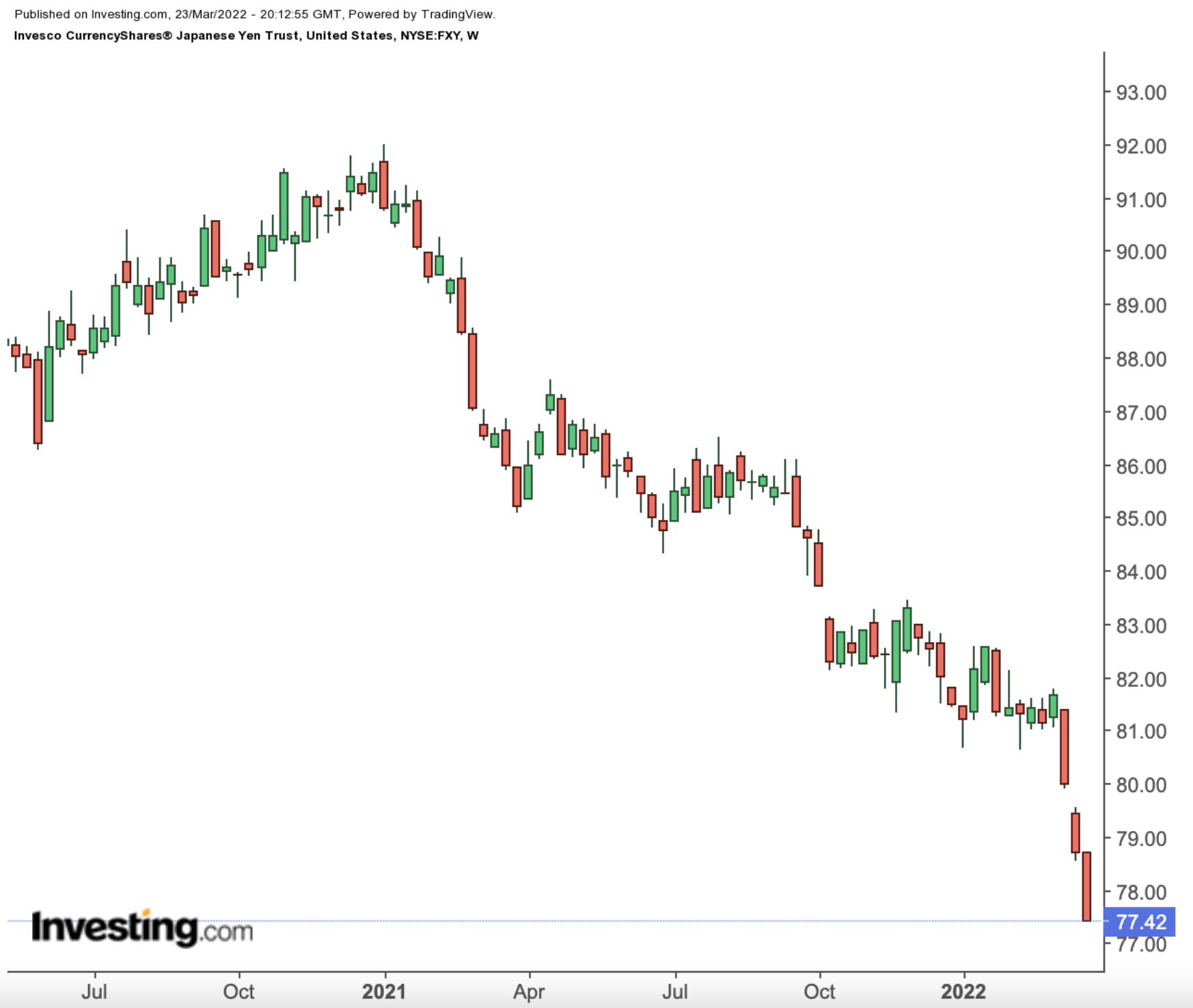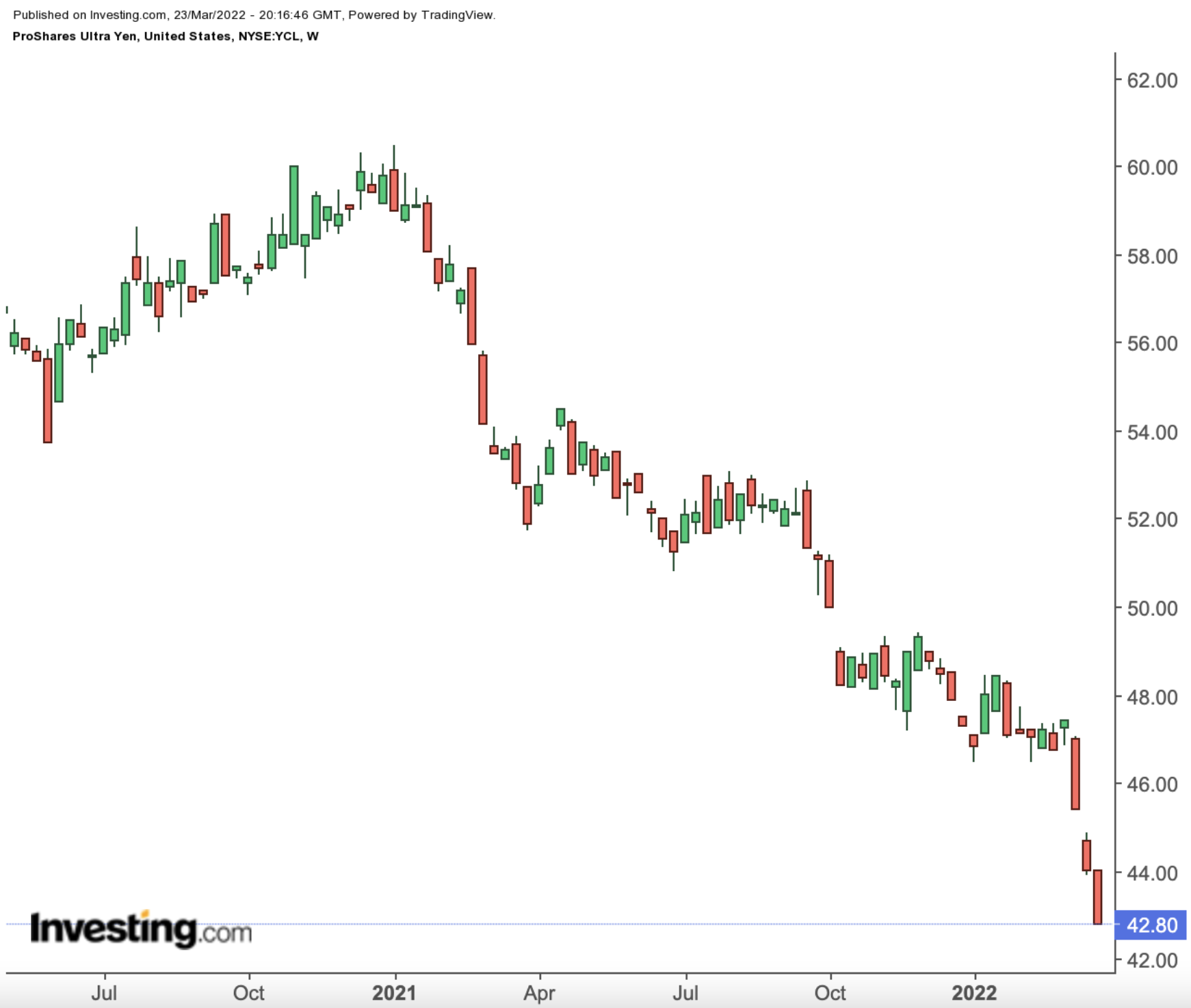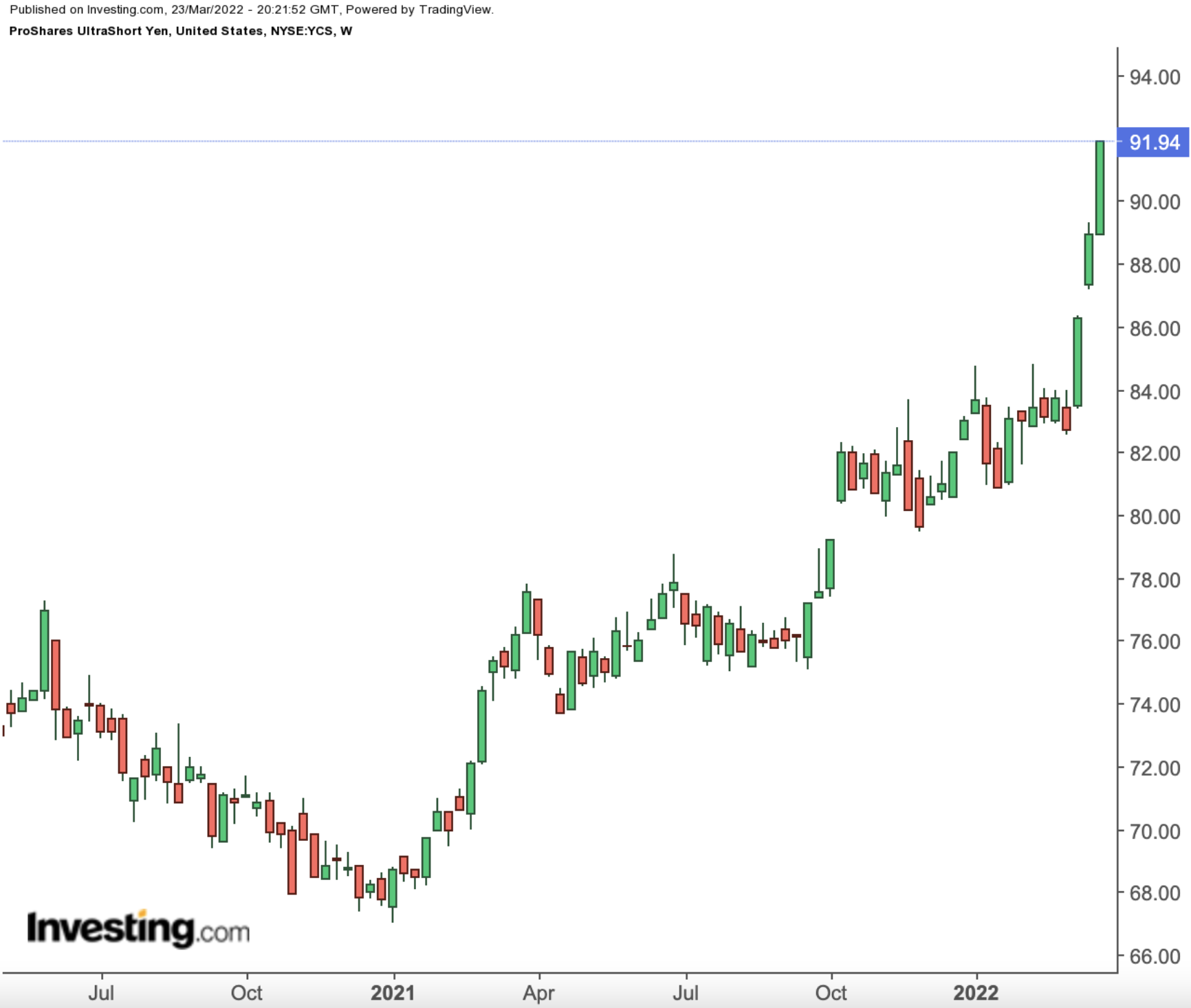The US Federal Reserve is on track to hike rates multiple times this year, boosting demand for the USD as well as triggering increased volatility in the global foreign exchange (FX) market. As a result, many investors have been looking at currency exchange-traded funds (CETFs) in order to participate in those moves.
Higher interest rates are typically bullish for a given currency. Accordingly, investors have become increasingly positive on the US dollar. The US Dollar Index (DXY) is up over 7.5% in the past 12 months and 2.7% in 2022.
The Invesco DB US Dollar Index Bullish Fund (NYSE:UUP), which provides exposure to futures contracts on the Dollar Index, has returned 6.3% in the last 12 months. UUP tracks the value of the US dollar relative to a basket of six major world currencies, including the Euro, Japanese yen, British pound, Canadian dollar, Swedish krona, and Swiss franc. With over $935 million assets under management, UUP is one of the most important currency funds.

Today’s article, however, puts the focus on Japanese yen CETFs.
The Japanese yen, or JPY (¥), is widely followed as it's considered a safe haven currency and a hedge against a potential decline in equity markets worldwide.
Most of our readers would know that the exchange rate between the greenback and the yen shows the number of yens for 1 US dollar. As we get set to publish, the USD/JPY stands at around 121.71, a multi-year high.

Invesco CurrencyShares Japanese Yen Trust
- Current price: $77.42
- 52-Week Range: $77.42–$87.58
- Expense Ratio: 0.4% per year
The fund we're focusing on today, the Invesco CurrencyShares® Japanese Yen Trust (NYSE:FXY), offers a straightforward investment strategy appropriate for yen bulls. It gives direct exposure to ¥ and tracks its price performance against the USD. FXY goes up when ¥ appreciates.
Right now, the fund would be more appropriate for those who are bearish on the yen, at least in the near-term. FXY was launched in February 2007, and net assets stand at $174.8 million.

Expectations regarding further interest-rate hikes in the US have put pressure on FXY. This CETF, which currently trades at a multi-year low, is down nearly 5% year-to-date (YTD) and 10.7% in the past 12 months.
The yen typically strengthens on rising risk aversion globally. Therefore, yen bulls who believe the currency is now oversold or those expecting increased volatility in global equities could find FXY of interest.
Meanwhile, short-term yen bulls might also consider a leveraged CETF, such as the ProShares Ultra Yen (NYSE:YCL).
With an expense ratio of 0.95%, this fund seeks two times (2x) daily investment performance of the price of the yen versus the US dollar. It is down 9.5% YTD and 20.2% over the past year.
Finally, despite the recent slide in the yen, some investors might feel there is still room left on the downside. After all, the Fed’s hawkish stance could create tailwinds for the greenback and drive YCL even lower.
Those yen bears could potentially use a leveraged and inverse ETF, i.e., the ProShares UltraShort Yen (NYSE:YCS). As the name suggests, this CETF provides daily returns that correspond to two times the inverse (-2x) of the Japanese yen spot price against the greenback. It has returned nearly 22.5% over the past year and is up 10.7% since January.

The uncertain global outlook makes it hard to predict how USD/JPY could move in the coming weeks. However, we expect a short-term bounce in the yen against the dollar soon. Yet, higher interest rates in the US will likely keep JPY under pressure in the months ahead.
A final note: leveraged or inverse funds are unsuitable for most long-term retail traders. Those who hold leveraged ETFs for longer than a day may expose themselves to substantial risk.
